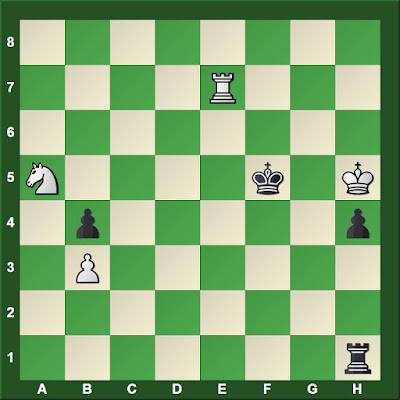All four games so far have been draws, but they have been hard fought. In game three, it seemed that Carlsen had a clear advantage, but Karjakin defended well.
White to move
Carlsen played 72.Rb7, which Yasser Seirawan asserts in his annotations for ChessBase was the blunder that let Karjakin save the game. Ironically, most beginners would play the correct move without thinking, but Carlsen's move looks very good to experienced players. When White's b-pawn starts rolling, Black has difficulties. However, Black's rook is able to threaten the knight and pawn on the queenside, while also threatening to assist the h-pawn's run to promotion. As Seirawan points out, there is also a checkmate threat if the White king becomes greedy.
The manner in which Carlsen let Karjakin off the hook in game four is even more instructive.
Black to move
Carlsen played 45...f4. Karjakin was quite clear in the post-game interview in the hallway after the game that this move produced the draw. However, a supported passed pawn on one side of the board and serious pawn weaknesses for the opponent on the other are two factors that are nearly always decisive. Carlsen thought they would be, but after the game described his thinking as "sloppy".
45...Be6 increases the pressure on White's position. The defender wants simplifications. When attacking, it is often best to present as many problems to your opponent as possible. Of course, most players would make Carlsen's move in a heartbeat. How many would be able to defend as accuirately as Karjakin from the White side?
Dorian Rogozenco's annotations for ChessBase are worth a look.
This game was drawn on move 94, well short of the record for longest WCC game, Korchnoi -- Karpov 1978, game 5 (124 moves).
During the game three commentary, Polgar informed viewers that Cartlsen explained his match strategy to her: he will punch Karjakin until he finds the blow that knocks him down. If Karjakin keeps making the errors that give Carlsen a clear advantage, this decisive punch will come soon.
















No comments:
Post a Comment